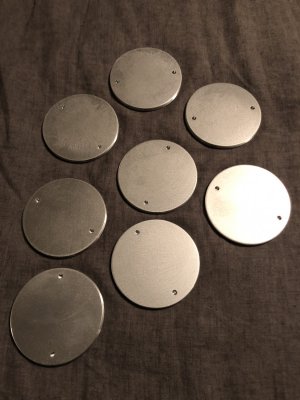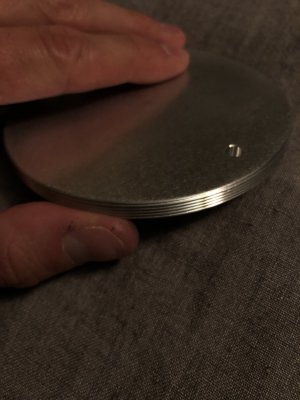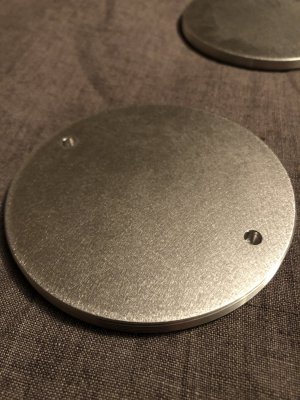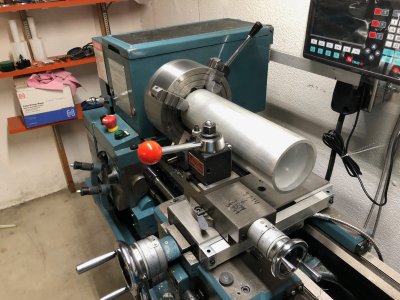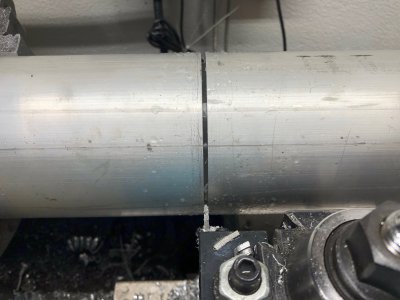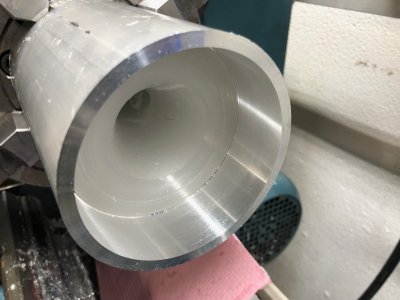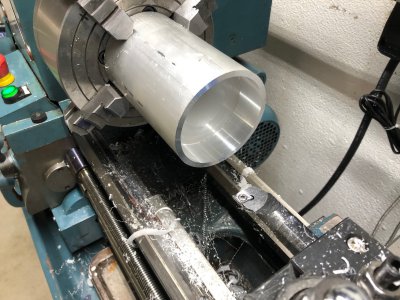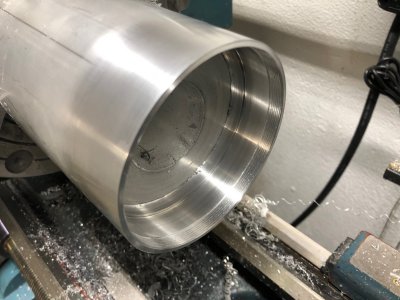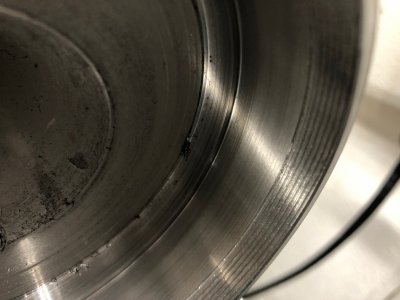- Joined
- Mar 26, 2018
- Messages
- 2,724
Finished the threads on all 8 end caps. I still need to chamfer the corners and clean them up but I'm close.
The work started by cutting 4" discs from 1/4" aluminum sheet on the CNC. Doing it this way saved me from having to part off through 4" barstock and it let me complete a secondary operation (spanner wrench holes) in the same operation. The parts were fixtured with the "Super Glue" trick I first saw on NYCCNC years ago.
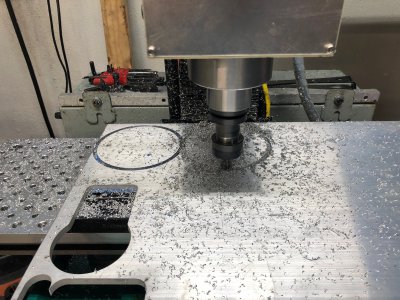
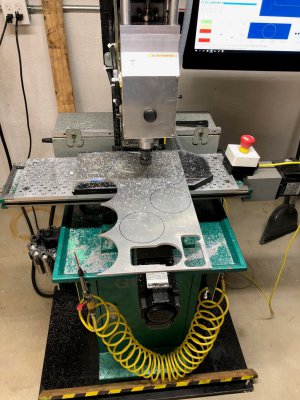
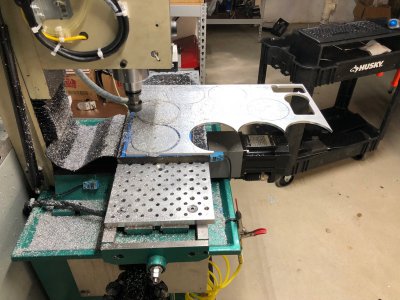
Then both sides of each part were cleaned up and coated in a single layer of masking tape which was firmly pressed down to the surface with a dowel pin. All 8 discs were then superglued to each other and held in the proper position by a constraint setup on my surface plate.
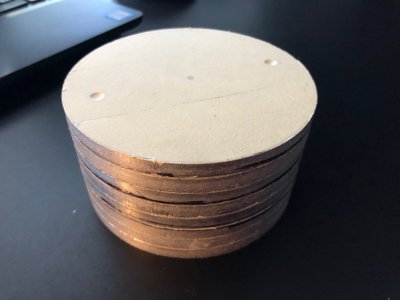
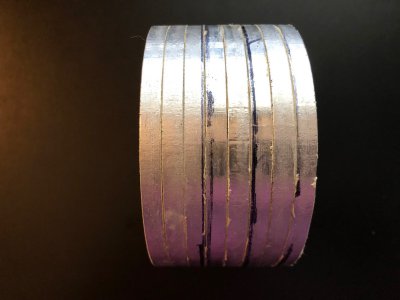
The entire stack was glued to a mandrel and turned as a single workpiece. Then whole piece was turned to the major diameter of the thread and then single pointed @ 24 TPI.
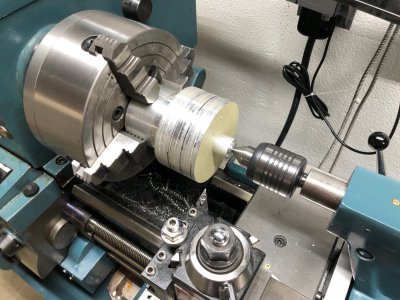
Measuring a 3.800"-24 thread over wires completely sucked. I lost the wires several times (one even snuck into the gearbox cover). Hit the pitch diameter tolerance perfectly, a bit on the looser side of the tolerance.
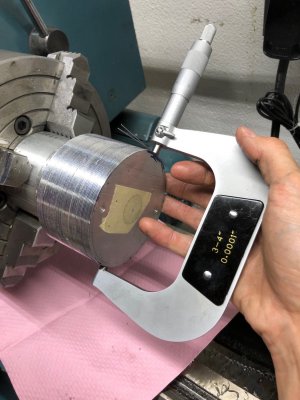
And all done!
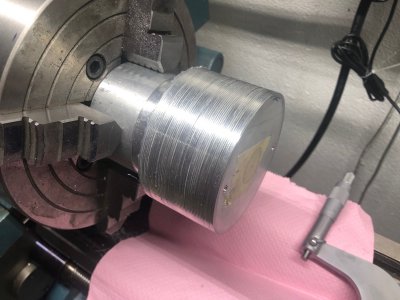
Still need to chamfer in place and then break this apart into the 8 different discs.
Then I'm making (2) thread gages and then the aluminum shells.
The work started by cutting 4" discs from 1/4" aluminum sheet on the CNC. Doing it this way saved me from having to part off through 4" barstock and it let me complete a secondary operation (spanner wrench holes) in the same operation. The parts were fixtured with the "Super Glue" trick I first saw on NYCCNC years ago.



Then both sides of each part were cleaned up and coated in a single layer of masking tape which was firmly pressed down to the surface with a dowel pin. All 8 discs were then superglued to each other and held in the proper position by a constraint setup on my surface plate.


The entire stack was glued to a mandrel and turned as a single workpiece. Then whole piece was turned to the major diameter of the thread and then single pointed @ 24 TPI.

Measuring a 3.800"-24 thread over wires completely sucked. I lost the wires several times (one even snuck into the gearbox cover). Hit the pitch diameter tolerance perfectly, a bit on the looser side of the tolerance.

And all done!

Still need to chamfer in place and then break this apart into the 8 different discs.
Then I'm making (2) thread gages and then the aluminum shells.


